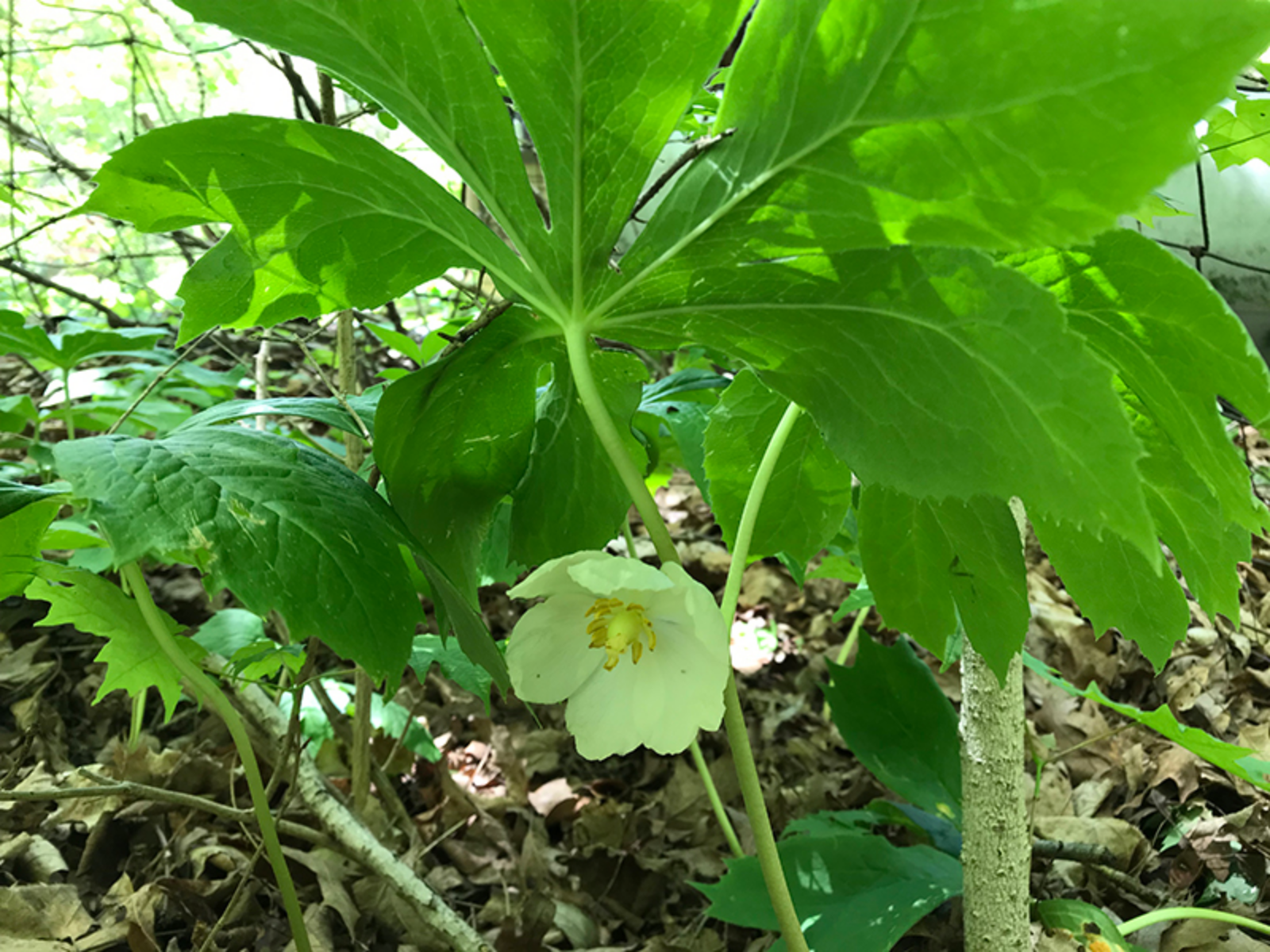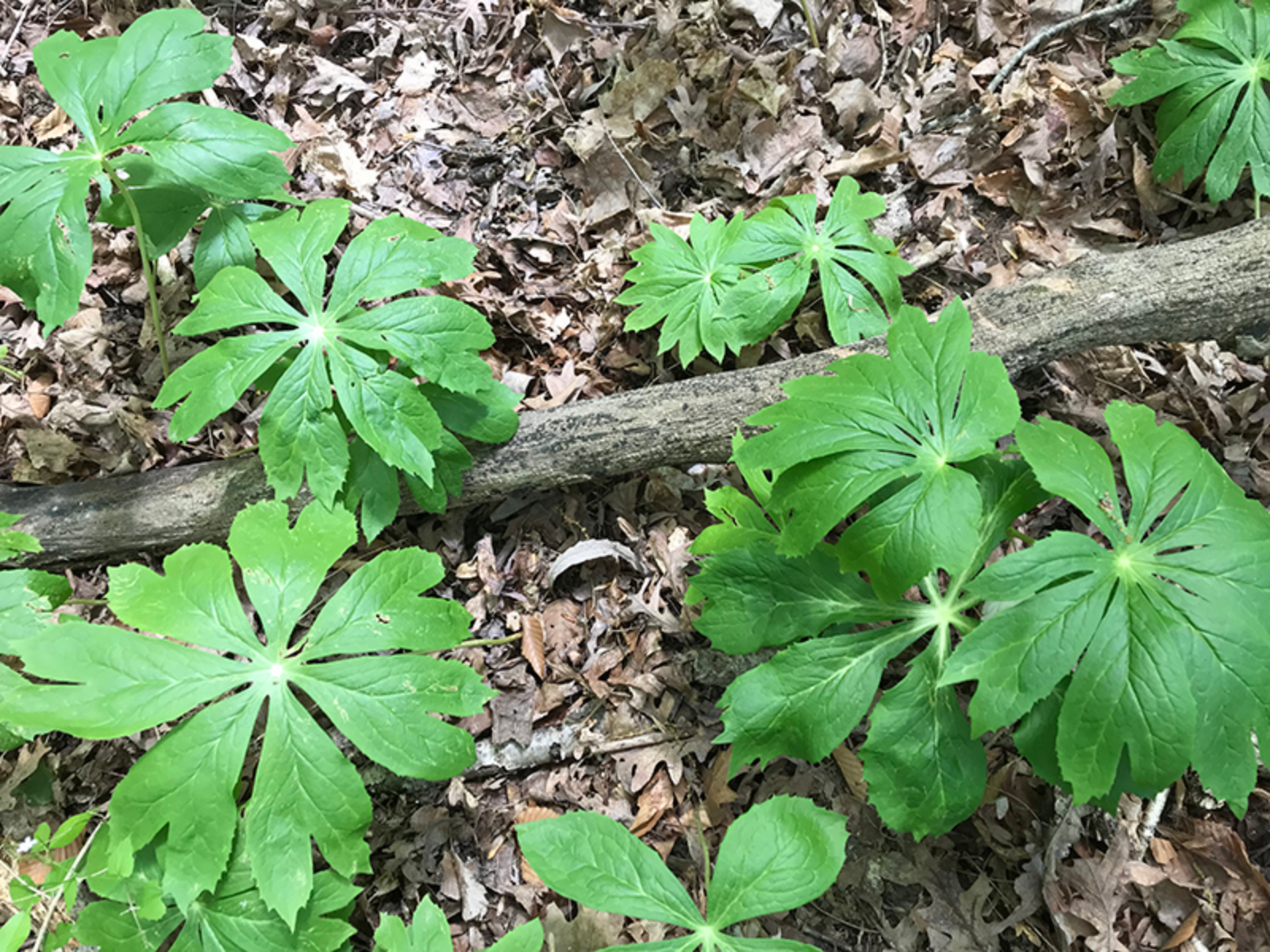Picture of the Week
May 10, 2021
It's May, So its Mayapple Season
Glenn Nice, PAT Manager, University of Wisconsin
This year seems to be a good year for mayapple (Podophyllum peltatum). The common name mayapple is fitting for this plant for generally blooms in May and then forms a yellow to red berry that with a little imagination can look similar to an apple. You ask were some common names come from, there you go.
May apple is a perennial that generally prefers the woods. However, I have seen this year several patches of mayapple that are growing along the sides of roads in open sun light. This perennial native to the US is easily identified. These plants generally look like a bunch of umbrellas on the forest floor. One or two leaves are born on a single stalk. The leaves have five to nine lobes. Flowers can be found in the axis of plants that have two leaves. Flowers are white to cream colored with 6-9 waxy petals.
Mayapple is reported to be a toxic plant. The leaves, stems, roots are not to be taken orally. It is toxic to cattle, humans, and swine [1]. Mayapple has been used as a medicinal plant in the past. It has been reported to have been used as a purgative, a possible treatment for venereal warts, and to treat constipation [2]. The prescribing of medicinal plants is like the prescribing of today's pharmaceuticals, always consult your doctor or a trained professional. Mayapple is of interest to the pharmaceutical industry. The leaves of mayapple are a source of podophyllotixin, a precursor to the cancer drugs etoposide, teniposide, and etopohos [3].
Click images to enlarge
All photos by Rosie Lerner
Reference:
1) Cornell University Poisonous Plants Information Database. Accessed May 7, 2008. [http://www.ansci.cornell.edu/plants/index.html]
2) Krochmal, A., R.S. Walters, and R.M. Doughty. 1971. A Guide to Medicinal Plants of Appalachia. Agriculture Handbook No. 400. U.S. Department of Agriculture.
3) Bedir, E., M. Tellez, H. Lata, I. Khan, K.E. Cushman, and R.M. Moraes. 2006. Post-harvest and scale-up extraction of American mayapple leaves for podophyllotoxin production. Industrial Crops and Products. Vol. 24 (1), pp. 3-7.




